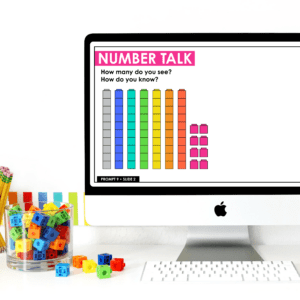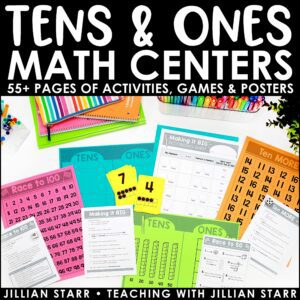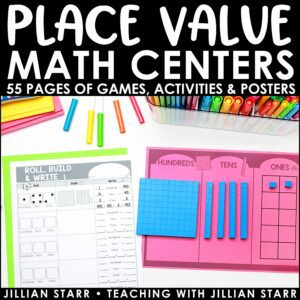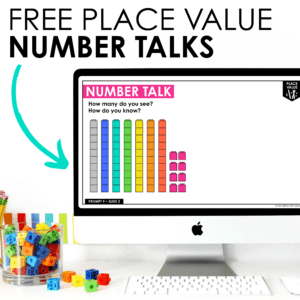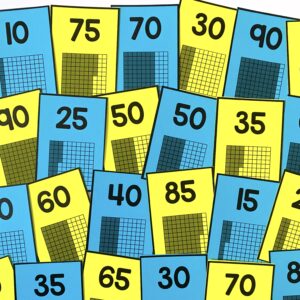
Learning about place value is a big leap for young mathematicians! Up until they begin this work, students have been focusing on accurately counting individual objects. When we introduce place value, we are suddenly asking them to understand the concept that ten ones can be grouped and that a numeral can represent groups of tens or ones.
So how do we introduce place value in an engaging and meaningful way? Today I’m sharing three of my favorite ways to introduce place value that will help build conceptual understanding: notice & wonder, choral counting, and counting collections. These activities share a common thread: they encourage students to analyze patterns and begin to create conclusions about our place value system, giving our mathematicians ownership over their thinking and a deeper understanding.
Introduce Place Value with Notice & Wonder
What Are Notice & Wonder Activities?
Notice and Wonder activities ask students both what they notice and what they wonder about a given image, equation, or number. These questions are a great way to introduce place value because provide students with a “low floor” to enter into the day’s work. Low-floor activities allow all students to access whatever content is being taught because they can enter the activity at their just-right level. Notice and wonder activities are short warm-ups that can be included in your everyday math lessons.
What Does it Look Like to Introduce Place Value?
Let’s take a look at an example of how to introduce place value with Notice & Wonder!
What do you notice? What do you wonder?
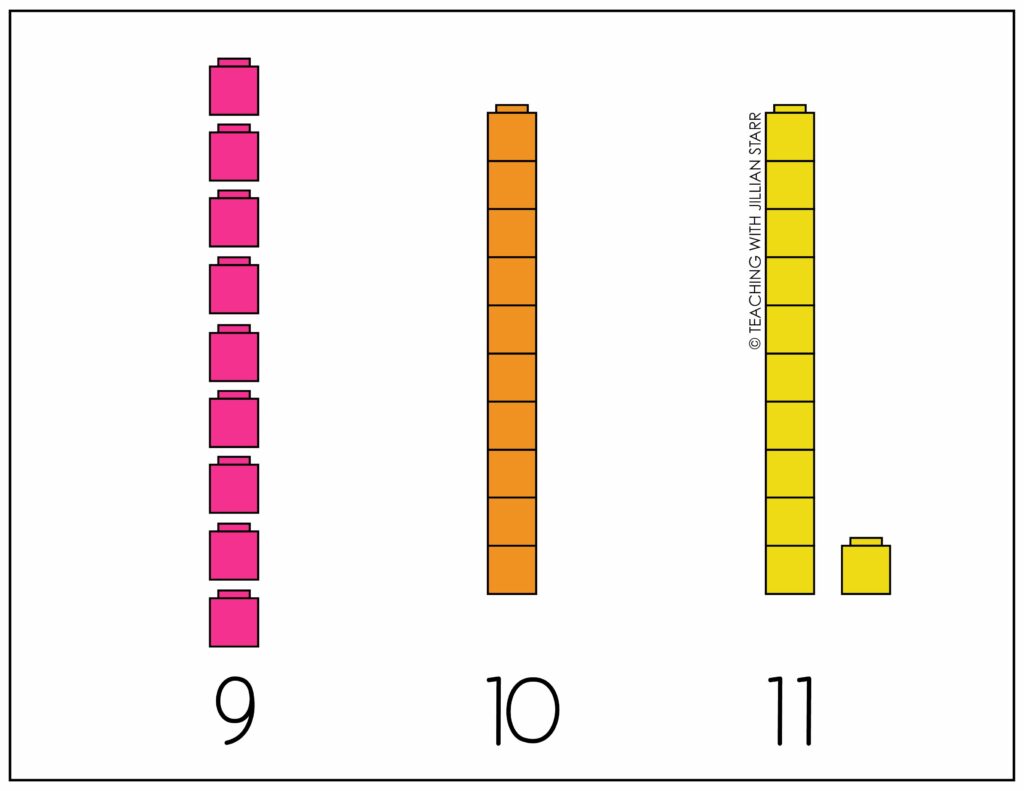
After presenting the above image to students, I might ask them what they notice and what they wonder. This image could lend itself to a lesson about ten ones being grouped as one ten rod.
Now the fun part! What will students share? They may say they notice numbers, blocks, or that the blocks are blue. Although those responses might not get at the math we want students to be thinking about, they are all “correct” answers that should be accepted without any discouragement. Other students may notice the individual cubes turned into a ten stick, a higher level observation. That’s what makes a notice and wonder activity so great! It allows all students to access it at their level.
Asking students what they wonder about encourages their curiosity about math and again, allows all students to access the activity. In this example, students may ask why counting starts at 9 or what the number 12 will look like with blocks.
Getting Started with Notice and Wonder Activities
Are you excited to get students noticing and wondering? Added bonus: this activity is low entry for teachers too!
Notice and wonder activities are easy to prep. All you need is a concept (like how to introduce place value) that you want to highlight, such as ones being grouped as tens or how only the tens place changes when you add 10 to a number. Once you have the concept, you can organize items to highlight that concept and take a photo to share. You might also draw a picture to highlight the concept or write an equation or series of equations.
Here are a bunch of ideas that you can try out tomorrow:
- Photos of manipulatives
- Photos of coins,
- Drawings
- Equations like 10 + 7 = 17 and 20 + 4 = 24. These equations can lead to a conversation about the place of the digits 1 and 2 as having the value of 10 and 20.
Introduce Place Value with Choral Counting
What Are Choral Counting Activities?
Choral counting is another simple, low-prep routine to practice or introduce place value in an engaging but meaningful way. Choral counting is an activity where students count together using “one voice.” The teacher directs students to count, forwards or backward, starting at a particular number and ending at a particular number. Because the goal of the activity is not just to practice rote counting, but primarily to highlight a particular pattern or concept, the teacher also records the count in a way that helps the pattern or concept to emerge. The teacher might also pause the count at particular points to highlight that pattern or concept or have students predict the next number.
What Does it Look Like to Introduce Place Value?
There are so many ways to record choral counts but I’ll share a photo of a count I have done with students to introduce place value. Recording students’ thinking is critical for multiple reasons: it gives students ownership over their ideas, it makes all students’ thinking visible, it can be referred to over and over, and it makes the concepts you are highlighting clear for students.
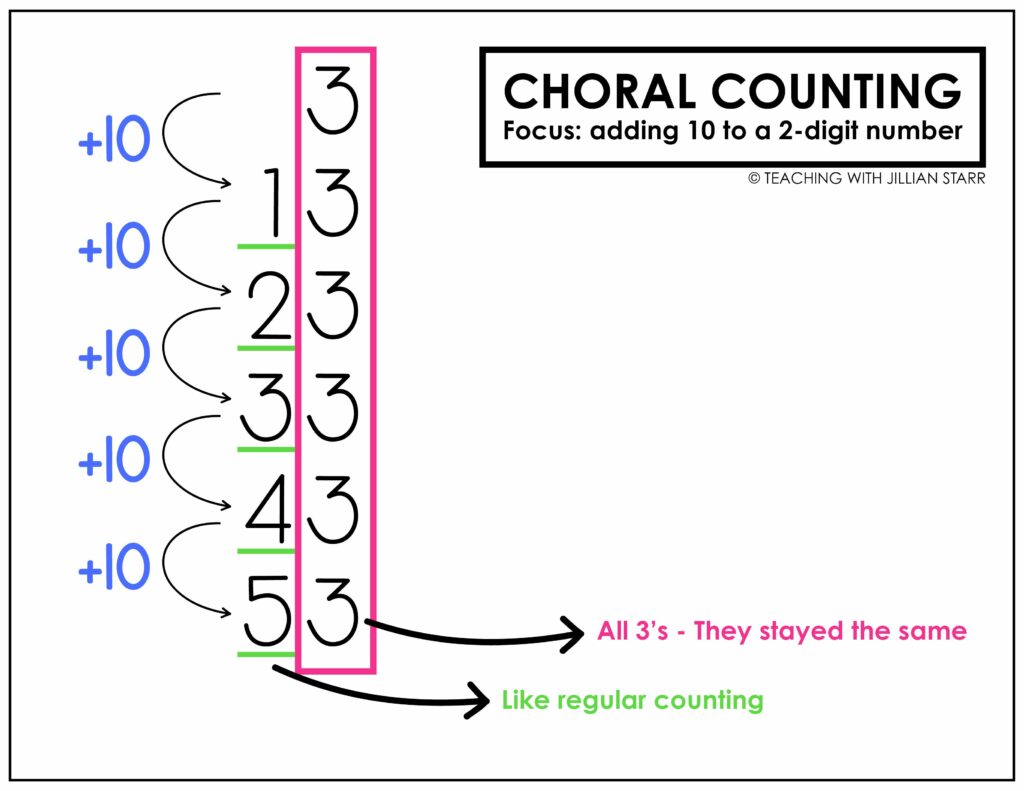
In this example, we were focusing on adding 10 to a two-digit number. By aligning the ones place, we can emphasize to students that this doesn’t change when adding on ten. Aligning our numbers in this way also makes clear that the digits in the tens place go up by one each time because we are adding one ten each time.
As students share, I record their thinking by circling, underlining, or somehow otherwise marking up the count. If possible, I prefer to use different colors to differentiate what students have shared, which gives students a sense of ownership over their ideas. Students know what color their idea was and also what their friends’ ideas were. They love it!
Getting Started with Choral Counting
There are unlimited ways to have students count in this activity, but I promised low prep, so here are a handful of ideas to help you introduce place value and get you going!
- Start at 1 and count to 30 by 1s & record 1-10, 11-20, and 21-30 each in one column or row
- Start at 0 and count by 10s to 100 & record in one column or row
- Start at 100 and count back by 10s to 0 & record in one column or row
- Combine the previous two counts & record them in two columns side by side
- Start at 1 and count forward by 1s to 50 or 100 & record so that 1 – 10 is in one row with the ones places of the following numbers lined up in columns
- Start at 0 and count forward by 1s to 50 or 100 & record so that 0 – 9 is in one row with the ones places of the following numbers lined up in columns
- Start at 100 and count backward by 1s to 50 or 0 & record so that 100 – 91 is in one row with the ones places of the following numbers lined up in columns
- For more advanced place value work, start at 3 and count by 10s to 93 & record in one column or row
Once the counts are recorded, the activity really gets going! Below are some prompts that you can use with students to get them to think deeply about the place value that is being demonstrated within the counts. Record students’ observations as they share them. I like to save the marked-up counts so that we can refer to them in the future as related discussions arise.
- Encourage students to use mathematical terms like ones and tens.
- What patterns do you notice?
- What numbers will come next? How do you know?
- What numbers will come before? How do you know?
Introduce Place Value by Counting Collections
What Are Counting Collections Activities?
Counting collections is an activity where the teacher asks students to count how many are in a collection of items such as cubes, pennies, crayons, or really any sort of small item. Students then represent their collection in writing and show how they counted the items in whatever way makes sense to them. Like the previous two activities, counting collections is another great activity that can be used to introduce place value in the discussion portion of the activity. Let’s take a look at some examples!
What Does it Look Like to Introduce Place Value?
Students may count their collections in whatever way makes sense to them: 1 by 1, pairing items, and grouping them in 5s or 10s are very common ways to see students counting. A student’s count may look something like this:
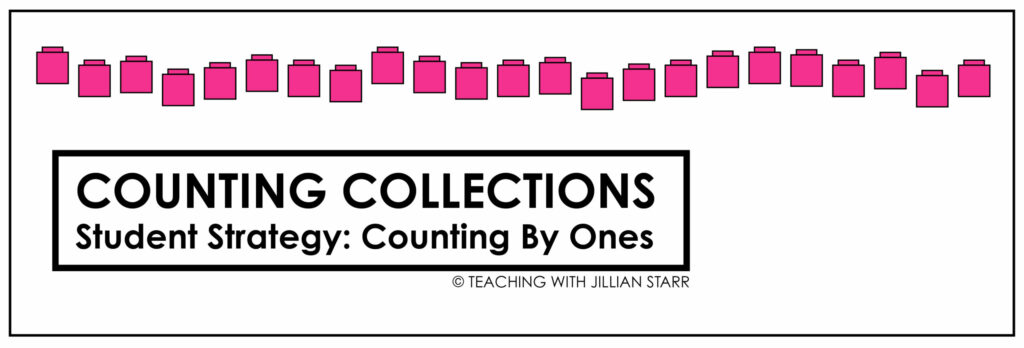
This student counted their collection by organizing their items into a straight line and counting by ones.
After students finish counting, they work to represent their thinking on paper, which might look something like this:
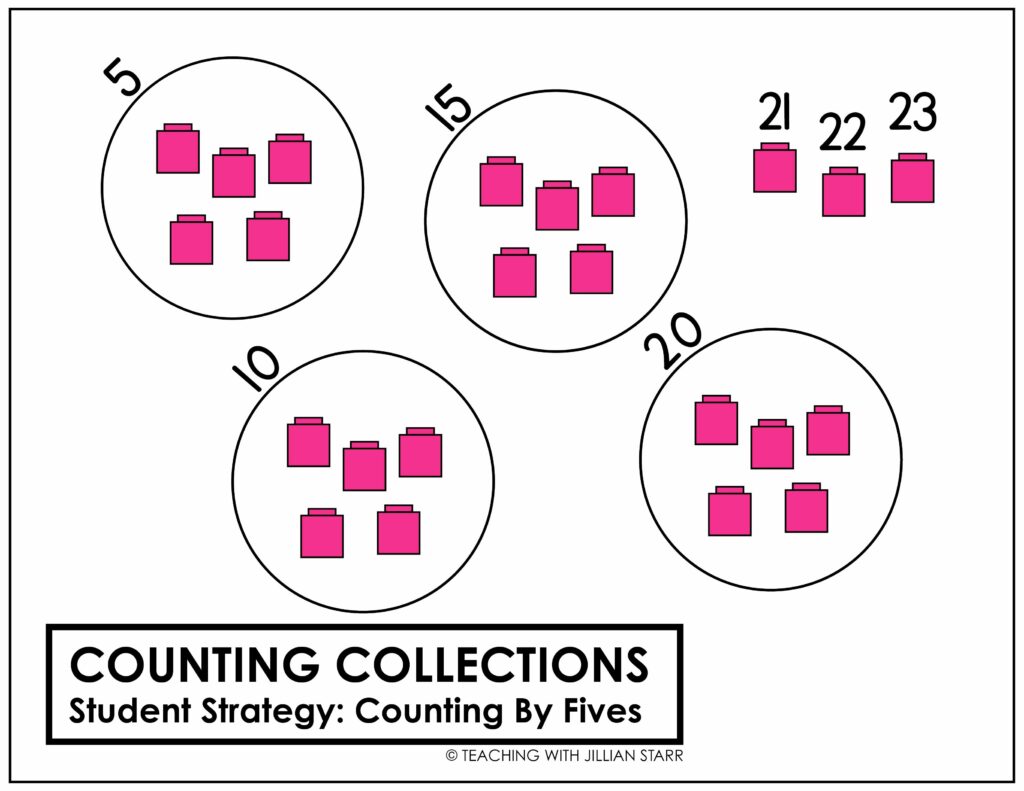
This student grouped their objects into sets of 5s and then counted by 5s to determine the total.
Like with the other activities, the discussion is where the magic happens! When discussing, the teacher strategically selects students to share in order to highlight place value. They might ask students who counted by 1s to share first and eventually ask students who counted by 10s to share.
This is a wonderful way to introduce place value because we can use guided questions. The teacher can support students in concluding that counting by 10s is much more efficient and allows them to quickly determine how many tens they have and how many leftover ones, making it easier to determine the total.
Getting Started with Counting Collections
Similar to the other activities, counting collections is also low prep. To begin, all you need are bags or baskets of items. The items can be anything! Search your classroom or home for any item that you have a lot of: paper clips, buttons, counters, crayons, etc. To introduce place value, you’ll want to put 10 or more items in each bag or basket.
You may decide to have students work in pairs or independently – either is fine! Then simply direct students to count their collections and record how they counted them on paper. You can also offer students ten frames and other ways for them to organize their items, like using egg cartons or small cups. Then display students’ representations in the room and have students do a gallery walk to see what their peers have done.
You might guess what’s coming next: discussion of course! Like notice and wonder activities and choral counting, this is the most important part because it allows you to highlight your selected place value concepts. When you have students share, be strategic about who you select to share. You’ll want students to share a variety of ways to count, including less efficient ways like counting by 1s. The contrast between counting by 1s and 10s will be helpful for students to discover as they share and listen to their peers share.
Below are a number of prompts that are open-ended enough to allow for all students to share but also give you the ability to guide the conversation as you introduce place value in your classroom.
- How did you count your collection? Why?
- How did the way you organized your collection help you count?
- Would you count that way again next time? Why?
- Is there anything new that you want to try next time?
- How did you represent your counting?
If you want to take a deep dive into Counting Collections, you can check out these two articles that dig into the routines and discussions of this activity.
- Part 1: Counting Objects- Using Collections to Create Hands-On Experiences
Part 2: Counting Activities to Boost Deep Conversations
I’ll be back next week with more ideas for how to teach and introduce place value to our young mathematicians. In the meantime, be sure to check out these 10 Tens and Ones Activities to Teach Place Value. In this post, you’ll find some of my all-time favorite place value games! I can’t wait to hear about what ideas you’ve tried and how your students are doing!

